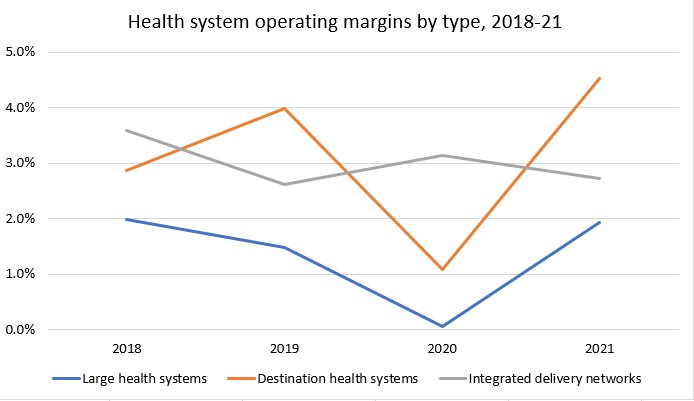4 reasons why now is the time to revisit value-based care
Lessons from the pandemic, investment trends, shifts in Medicare policy, and technological change suggest that now may be the time to reconsider and revisit value-based care.
Value-based care has been a hot topic for years now. Every conference, every industry meeting and every publication has talked about the importance of moving “from volume to value.” The Affordable Care Act was expected to super-charge that shift with the introduction of accountable care organizations. The continued growth of Medicare Advantage (MA) plans was also expected to help push the transition along.
But somehow, despite all the hype, the experiments and demonstration programs and the systemic shifts that were expected to push us in the direction of value, we still find ourselves in a world where most hospitals and health systems remain largely oriented around fee-for-service payments. Moreover, until recently, they have been generally successful doing so.
So why is now the right time to reconsider value-based care as a strategy? What is different today?
We would argue that four things should prompt health system executives to reconsider and revisit value-based care as a strategy.
1 COVID-19 made it clear that hospitals and health systems were already at risk. If the pandemic demonstrated nothing else — and it demonstrated plenty about the state of our healthcare system, lack of health equity and the destructive impact of politics on public health — it showed us that as an industry focused on fee-for-service medicine, we were at risk all along. We just didn’t realize where that risk was coming from.
2 The “smart” money is aiming to peel away hospital patient pipelines and more profitable services. If you follow the money in healthcare, it’s heading rapidly into primary care, specialty practices and other areas and aspects of ambulatory care. Investors are peeling off the pipelines and networks that control hospital volumes, with the potential end result that hospitals as price-takers and cost-centers for the rest of the industry will be relegated to taking the sickest, most complex and least profitable patients.
3 Medicare is continuing to shift to value-based payments. With a goal of getting 100% of payments to providers to go through some-type of value-based payment by 2030, traditional Medicare is continuing to look for ways to shift from straight fee-for-service.a Medicare Advantage continues to expand, incenting MA plans to look for ways to shift care out of hospitals as a way to drive margins. And as Medicare goes, so goes the rest of the industry.
4 Technology that enables care outside of hospital walls continues to advance. As the power and reach of technology continue to expand our ability to deliver complex and hospital-level care outside of hospital walls, hospitals and health systems face both opportunities and challenges. These technologies can help health systems create capacity and improve patient satisfaction, but they also drive care and volume out of the physical hospital. And there is no guarantee that health systems will “own” the volume that moves outside of the hospital building; other parts of the healthcare delivery system will be eager to claim it.
So what is a health system executive to do?
Value-based care, pursued deliberately and methodically, could be the answer. Well-executed, a value-based care strategy can help to solidify patient capture and volume, while also broadening revenue streams and insulating health systems from some of the impacts of reductions in overall hospital volume. Value-based care arrangements can necessitate expanding care management and coordination beyond the hospital’s four walls, supporting the deepening of relationships with ambulatory networks and the development of stronger competencies in care management and care coordination. These arrangements can also support or provide the rationale for investments in new capabilities and more effective systems of care.
Financially, value-based care arrangements can help to create more predictable and reliable revenue streams. The real benefits of this diversification can be seen in the financial results of many organizations during the pandemic. Hospitals and health systems that had value-based care contracts were better able to withstand the financial impacts of plummeting volumes for routine and elective care (see the line for integrated delivery networks in the exhibit below). Health systems with risk withstood the financial pressures of the pandemic thanks to their access to the premium dollar, while organizations without significant exposure to value-based contracts saw significant fluctuations in financial performance.

In contemplating a shift toward value-based care, there is no need to start big. Small steps can help you build the experience and muscles that will help you succeed at a larger scale:
- Start by identifying areas and service lines where you are strong and where taking additional risk is less risky.
- Identify your position in the market and your payer mix. Are there obvious or logical partners for this work?
- Broaden your understanding of costs to include the total cost of care for specific conditions or populations.
- Build your care management and care coordination capabilities, improve your ability to manage care transitions, and most of all, begin to ask yourself what it means to be a cost center versus a revenue center in healthcare.
These small shifts in focus and mindset can help prepare you for taking on a greater role in value-based care and position you for a more secure financial future.
The authors thank Brian Ball, vice president at Kaufman Hall, for his contributions to this article.
Footnote
a Fowler, L., Rawal, P., Fogler, S., Waldersen, B., O’Connell, M., Quinton, J., “The CMS Innovation Center’s Strategy to Support Person-centered, Value-based Specialty Care,” CMS, Nov. 7, 2022.






